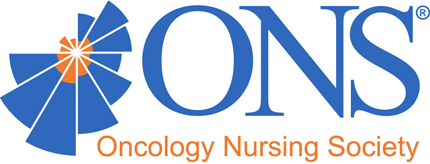Bennett, M.I., Bagnall, A.M., & Jose Closs, S. (2009). How effective are patient-based educational interventions in the management of cancer pain? Systematic review and meta-analysis. Pain, 143(3), 192–199.
DOI Link
Purpose
To quantify and compare the benefits of various patient-based educational interventions for cancer pain management; to improve understanding of the relationship between education and improved pain outcomes
Search Strategy
- Databases searched were MEDLINE, CINAHL, EMBASE, Applied Social Sciences Index and Abstracts (ASSIA), Allied and Complementary Medicine Database (AMED), and PsycINFO from inception to Nov. 30, 2007, and the Cochrane Library; Database of Abstracts of Reviews of Effects (DARE) and National Institute for Health and Clinical Excellence (NICE) websites; and contents lists of Pain, Journal of Clinical Oncology and Journal of Patient Education and Counseling. In addition, investigators completed manual searches of article reference lists.
- Authors did not include a list of search keywords.
- Studies were included in the review if they
- Incorporated experimental designs that included a control group.
- Involved adults with pain from active cancer.
- Used a patient-based educational intervention on an individual basis.
- Assessed pain-related outcomes.
- Studies were excluded if they dealt with pain from cancer treatment, such as surgery or chemotherapy.
Literature Evaluated
The search retrieved 61 studies. Authors chose 21 studies for analysis. Twelve studies included pain-outcome data suitable for meta-analysis. Authors used the Cochrane Collaboration recommendations for randomized controlled trials as the basis of study evaluation. Studies were done in six different countries.
Sample Characteristics
- The sample was composed of 3,501 patients. The sample range across studies was 30–1,256.
- Authors did not provide sample characteristics but did state that samples were composed predominantly of females and individuals who were recently diagnosed with a good performance status.
Results
- Analysis of Brief Pain Inventory (BPI) measures only showed significant effects of education on average pain intensity (p = 0.002), maximum pain intensity (p = 0.0004), least pain (p = 0.006), and current pain.
- Effects of patient education on patient knowledge differed according to the scale of measurement. Significant outcomes resulted from the BPI questionnaire and the Pain Experience Scale only.
- Across all studies, authors noted a significant effect on patient knowledge (p = 0.008). Compared to multiple exposures to patient education, single exposure had clearer benefits on knowledge and attitudes and similar effects on maximum pain intensity.
- Effects of knowledge on average pain intensity were inconsistent. Effects on all outcomes were greater when intervention was compared to usual care rather than a placebo group or attentional control.
- Education had no effect on the extent to which pain interfered in daily activities.
- Data showed heterogeneity that authors could not explain, although they noted that in some cases heterogeneity seemed to be associated with measurement type.
- Length of follow-up and the nature of the education varied across studies; therefore, authors could not analyze these factors separately.
- Overall weighted mean difference regarding reduction in pain intensity was 0.76.
Conclusions
Findings demonstrate that patient-based educational interventions for cancer pain improve knowledge and attitudes and can reduce pain intensity. The fact that effects were greater in studies with no attentional control raises the question of the benefits of attention itself. Authors observed that benefits were associated with both single- and multiple-exposure studies. Authors pointed out that the weighted mean difference in pain intensity, with educational interventions, was as large as that reported in another analysis for some types of co-analgesic therapies. This finding supports the clinical relevance of providing patient education.
Nursing Implications
Most of this research was done early in cancer care and may not be directly applicable to patients in later phases of care. Additional research, with long-term follow-up and other patient groups, is needed.

